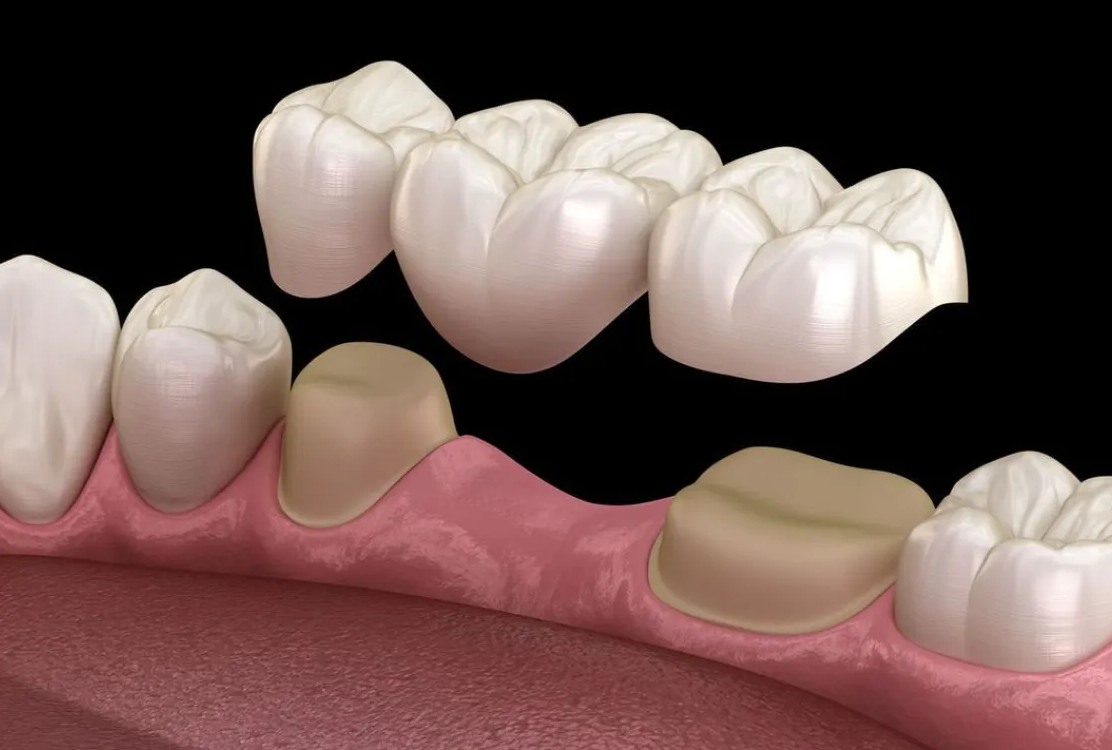
Missing teeth can affect not only your smile but also your ability to eat and speak properly. For many patients seeking restorative dental solutions, bridges offer an effective and time-tested option. A local dental clinic in Irvine can evaluate your specific situation and determine if this treatment might be right for your needs. This comprehensive guide explores dental bridges—custom-made restorations that replace missing teeth by anchoring artificial teeth between natural teeth or implants—covering how they work, the different types available, their benefits, who makes a good candidate, and proper maintenance practices to ensure long-lasting results.
How Dental Bridges Work
When replacing missing teeth, dental bridges work by securely anchoring artificial teeth between two natural teeth or dental implants. The adjacent natural teeth, called abutment teeth, serve as anchors for the bridge. A dental crown is placed on each abutment tooth to provide stability and support for the artificial teeth in between. These artificial teeth, known as pontics, are custom-made to match the shape and color of your natural teeth, restoring functionality and aesthetics to your smile. Dental bridges can be made from various materials such as porcelain, metal alloys, or a combination of both, ensuring durability and a natural appearance. By bridging the gap caused by missing teeth, dental bridges help maintain proper dental alignment and prevent issues like shifting teeth or bite problems.
Types of Dental Bridges
To understand the different options available for replacing missing teeth with dental bridges, it is important to explore the various types of dental bridges commonly used in restorative dentistry. Here are five types of dental bridges you should know about:
- Traditional Dental Bridges
- Cantilever Dental Bridges
- Maryland Bonded Bridges
- Implant-Supported Bridges
- Hybrid Bridges
Each type of dental bridge has its own unique characteristics and is suitable for different situations. Traditional bridges are commonly used, while cantilever bridges are an option when there is only one adjacent tooth for support. Maryland bonded bridges are a conservative choice, implant-supported bridges offer great stability, and hybrid bridges combine different techniques for optimum results.
Benefits of Dental Bridges
Enhance your oral health and restore your smile by considering the numerous benefits of dental bridges. Dental bridges offer a range of advantages, including improved chewing and speaking abilities, as they fill the gap left by missing teeth. By maintaining the alignment of your surrounding teeth, bridges help distribute the forces in your bite properly, preventing issues like shifting teeth or temporomandibular joint (TMJ) disorders. Moreover, they can enhance the aesthetic appeal of your smile, boosting your self-confidence. Dental bridges also provide support to your facial muscles, preventing a sunken appearance that can occur when teeth are missing. With proper care, bridges can last for many years, providing a long-term solution to missing teeth.
Candidacy for Dental Bridges
Assessing your overall oral health and the specific condition of your teeth, eligibility for dental bridges is typically determined through a thorough evaluation by a dental professional. To understand if you are a suitable candidate for a dental bridge, here are some key factors to assess:
- Adequate jawbone density to support the bridge.
- Good oral hygiene habits to maintain the bridge.
- Healthy neighboring teeth for bridge attachment.
- Absence of severe gum disease or decay.
- Willingness to commit to regular dental check-ups for bridge maintenance.
These factors are vital in determining whether a dental bridge is the right solution for your dental needs.
Care and Maintenance of Dental Bridges
Proper maintenance and care of your dental bridge is necessary to ensure its longevity and effectiveness in restoring your smile and chewing function. To ensure the durability of your bridge, it’s important to maintain good oral hygiene. Brush your teeth twice a day with a soft-bristled toothbrush and fluoride toothpaste. Floss daily to remove plaque and food particles that can accumulate around the bridge. Moreover, regular dental check-ups and professional cleanings are essential to monitor the condition of your bridge and address any issues promptly. Avoid chewing on hard foods or objects that may damage the bridge. If you participate in contact sports, consider wearing a mouthguard to protect your dental bridge from potential injuries. By following these care guidelines, you can maximize the lifespan of your dental bridge and enjoy a healthy, functional smile.
Related Topics:
